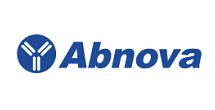HAVCR2 polyclonal antibody



* The price is valid only in USA. Please select country.
-
More Files
- More Functions
-
Specification
Product Description
Goat polyclonal antibody raised against synthetic peptide of HAVCR2.
Immunogen
A synthetic peptide corresponding to human HAVCR2.
Sequence
C-KWYSHSKEKIQN
Host
Goat
Theoretical MW (kDa)
33.4
Reactivity
Human
Form
Liquid
Purification
Antigen affinity purification
Concentration
0.5 mg/mL
Quality Control Testing
Antibody Reactive Against Synthetic Peptide.
Recommend Usage
ELISA (1:64000)
Flow Cytometry (10 ug/mL)
Immunofluorescence (10 ug/mL)
Western Blot (0.1-1 ug/mL)
The optimal working dilution should be determined by the end user.Storage Buffer
In Tris saline, pH 7.3 (0.5% BSA, 0.02% sodium azide)
Storage Instruction
Store at -20°C.
Aliquot to avoid repeated freezing and thawing.Note
This product contains sodium azide: a POISONOUS AND HAZARDOUS SUBSTANCE which should be handled by trained staff only.
-
Applications
Western Blot (Cell lysate)
HAVCR2 polyclonal antibody (Cat # PAB6962) (0.1 ug/mL) staining of A549 (1) and (0.5 ug/mL) HepG2 (2) cell lysate (35 ug protein in RIPA buffer). Detected by chemiluminescence.Immunofluorescence
HAVCR2 polyclonal antibody (Cat # PAB6962) Immunofluorescence analysis of paraformaldehyde fixed HepG2 cells, permeabilized with 0.15% Triton. Primary incubation 1hr (10 ug/mL) followed by Alexa Fluor 488 secondary antibody (2 ug/mL), showing nuclear and plasma membrane staining. The nuclear stain is DAPI (blue). Negative control: Unimmunized goat IgG (10 ug/mL) followed by Alexa Fluor 488 secondary antibody (2 ug/mL).Enzyme-linked Immunoabsorbent Assay
Flow Cytometry
HAVCR2 polyclonal antibody (Cat # PAB6962) Flow cytometric analysis of paraformaldehyde fixed HepG2 cells (blue line), permeabilized with 0.5% Triton. Primary incubation 1hr (10 ug/mL) followed by Alexa Fluor 488 secondary antibody (1 ug/mL). IgG control: Unimmunized goat IgG (black line) followed by Alexa Fluor 488 secondary antibody. -
Gene Info — HAVCR2
Entrez GeneID
84868Protein Accession#
NP_116171.3Gene Name
HAVCR2
Gene Alias
FLJ14428, KIM-3, TIM3, TIMD3, Tim-3
Gene Description
hepatitis A virus cellular receptor 2
Omim ID
606652Gene Ontology
HyperlinkGene Summary
CD4 (MIM 186940)-positive T helper lymphocytes can be divided into types 1 (Th1) and 2 (Th2) on the basis of their cytokine secretion patterns. Th1 cells and their associated cytokines are involved in cell-mediated immunity to intracellular pathogens and delayed-type hypersensitivity reactions, whereas Th2 cells are involved in the control of extracellular helminthic infections and the promotion of atopic and allergic diseases. The 2 types of cells also cross-regulate the functions of the other. TIM3 is a Th1-specific cell surface protein that regulates macrophage activation and enhances the severity of experimental autoimmune encephalomyelitis in mice.[supplied by OMIM
Other Designations
T cell immunoglobulin mucin 3|T cell immunoglobulin mucin-3|kidney injury molecule-3
-
Interactome
-
Disease
-
Publication Reference
-
The TIM gene family regulates autoimmune and allergic diseases.
Meyers JH, Sabatos CA, Chakravarti S, Kuchroo VK.
Trends in Molecular Medicine 2005 Aug; 11(8):362.
-
The TIM gene family regulates autoimmune and allergic diseases.
- +1-909-264-1399
+1-909-992-0619
Toll Free : +1-877-853-6098 - +1-909-992-3401
- sales@abnova.com














